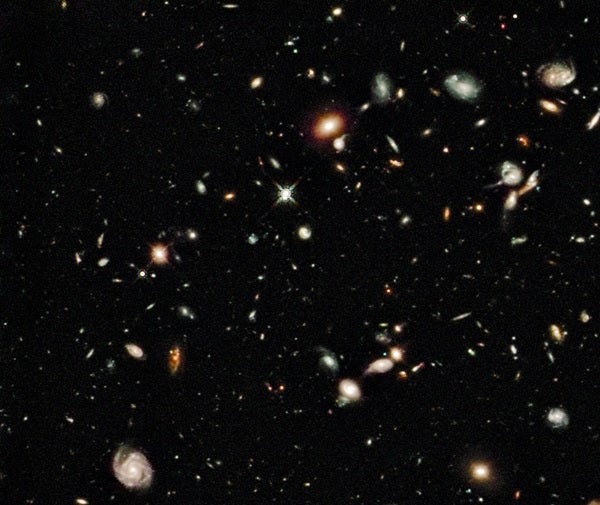Now a group of astronomers led by Asa Bluck of the University of Victoria in Canada has found a relatively simple relationship between the color of a galaxy and the size of its bulge — the more massive the bulge, the redder the galaxy.
Asa and his team used data from the Sloan Digital Sky Survey to group together over half a million galaxies of all different colors, shapes, and masses. They then used pattern-recognition software to measure the shape of each one and see how the proportion of red stars in a galaxy varies with its other properties.
They found that the mass in the central bulge — regardless of how big the disk surrounding it may be — is the key to knowing the color of the whole galaxy. Above a given bulge mass, galaxies are red and have no new young stars.
Almost all galaxies have supermassive black holes at their centers. The mass of the bulge is closely related to the mass of the black hole — the more massive the black hole, the more energy is released into the surrounding galaxy in the form of powerful jets and X-ray emission. This can blow away and heat up gas, stopping new stars from forming.
“A relatively simple result, that large galaxy bulges mean red galaxies, has profound consequences,” said Asa. “Big bulges mean big black holes, and these can put an end to star formation.”










